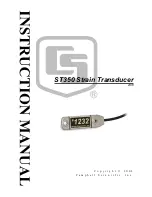
17
FT-847 O
PERATING
M
ANUAL
Installation
A
CCESSORY
I
NTERFACING
FM Packet TNC Interfacing
The FT-847 provides a convenient rear-panel
PKT
jack
for easy connections to your TNC. The connections to
this jack are in accordance with a standard adopted by
many amateur-product manufacturers. However, we
recommend that you verify the connections to any cable
you already own by comparison to the pictorial be-
low.
Only the “Main” band may be used for packet opera-
tion, as there are no connections to the “Sub” band via
the
PKT
jack.
The FT-847’s
PKT
jack connections are optimized for
the data transmission and reception speed in use. In
accordance with industry standards, the signal levels,
impedances, and bandwidths are significantly differ-
ent on 9600 bps as opposed to 1200 bps. If your TNC
does not provide multiple lines to accommodate such
optimization, you may still be able to utilize your TNC,
if it is designed for multiple-radio use, by connecting
the TNC “Radio 1” port to the 1200 bps lines on the
FT-847, and the “Radio 2” port to the 9600 bps lines.
For ease in making connections to your TNC, the op-
tional CT-39 Packet Cable for the FT-847 is available
from your Yaesu dealer. With reference to the “
PKT
Jack Pin Connections
” chart and data jack pinout
pictorial on this page, you may connect your TNC in
minutes using the color code information provided.
Most modern TNCs use a PLL-type DCD (Data Car-
rier Detect) circuit, so you will generally not need to
connect anything to the Squelch Control line (Pin 6)
of the
PKT
jack.
Note that 9600 bps packet transmit-deviation adjust-
ment is very critical to successful operation, and can
only be accomplished using a calibrated deviation
meter (such as that found on an FM Service Monitor
used in a communications service center). In most
cases, the Packet Data Input level (set via a potenti-
ometer inside the TNC) must be adjusted to provide a
deviation of ±2.75 kHz (±0.25 kHz). Check with your
packet node’s sysop if you have any questions about
the appropriate deviation level for your network.
The setting of the 1200 bps Packet Data Input level is
much less critical, and satisfactory adjustment to the
optimum (±2.5 ~ ±3.5 kHz) deviation can usually be
done “by ear” by adjusting the TNC’s 1200 bps TX
Audio Level potentiometer so that the outgoing pack-
ets (as monitored on a separate VHF or UHF receiver)
are slightly lower than the level of your speech. If you
have the optional
MH-36
D8
DTMF Microphone, set
your TNC’s tone output to be about the same level as
that of the DTMF tones produced by the
MH-36
D8
.
The “RX 1200” and “RX 9600” lines are fixed-level
audio outputs, not affected by the setting of the
AF
(G
AIN
) control. Selection of the Packet Baud Rate to
be used is performed via Menu #23. See the section
on “
FM P
ACKET
O
PERATION
” on page 56 for details.
PKT Jack Pin Connections
Pin
Label
Notes
1
PKD
Packet Data Input
Impedance: 10 k
Ω
Max. Input Level:
40 mV pp @ 1200bps
2.0 V pp @ 9600bps
2
GND
Signal Ground
3
PTT
Ground on Transmit
4
RX9600
9600bps Packet Data Out
Impedance: 10 k
Ω
Max. Output Level: 500 mV pp
5
RX1200
1200bps Packet Data Out
Impedance: 10 k
Ω
Max. Output Level: 300 mV pp
6
SQL
Squelch Control
Squelch Open: +5V
Squelch Closed: 0V
















































